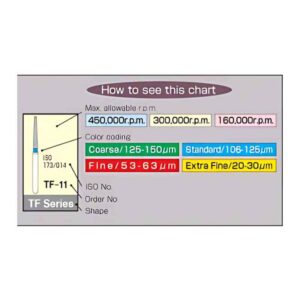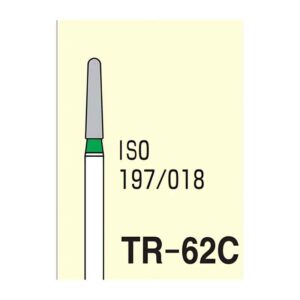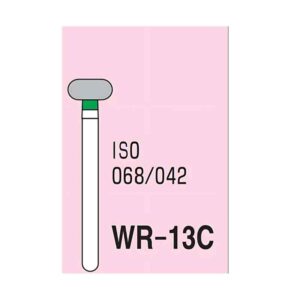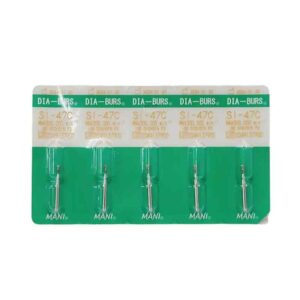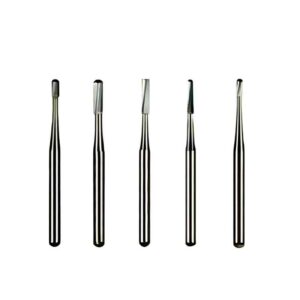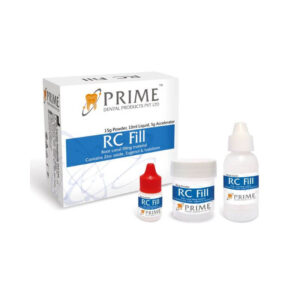+91-9912355536
support@dentxmart.com
Mani Diamond Burs – Coarse / C Series
₹400.00 Original price was: ₹400.00.₹280.00Current price is: ₹280.00.
MRP Inclusive of all taxes
Buy more save more!
Buy from 5 to 10 items and get 1% OFF
on each productBuy from 10 to 20 items and get 2% OFF
on each product- Free shipping on all orders above Rs. 2,500
- No hassle returns, 10 days return
- Express delivery all over India
Product Details
Mani Diamond Burs are specialized dental tools that feature a stainless steel working surface coated with fine diamond crystals. These rotary grinding instruments are designed for precision work on hard tissues, such as teeth and bones, making them essential tools in the field of dentistry.
Compatible with dental handpieces, these burs provide controlled and efficient use during various dental procedures. This makes them highly effective for a wide range of tasks, ensuring accurate results in restorative and cosmetic treatments.
In addition to their primary dental applications, Mani Diamond Burs are versatile tools capable of grinding various hard materials. These include metals, plastics, and porcelain, making them valuable assets not only in dental practices but also in industrial and laboratory environments where precise material removal is required.
The fine diamond crystal coating on these burs guarantees their durability and long-lasting performance. This feature makes them a reliable choice for professionals seeking accuracy, efficiency, and consistency in their work.
Features
- This product is attached to a dental handpiece and rotates to grind hard materials and tissues. It features a dental diamond bur with a stainless steel shank and is a non-sterile instrument.
- Main Materials:
- Metal Base: Stainless steel, including nickel and chromium.
- Working Part: Fine diamond crystals bonded to the metal base (including nickel and chromium).
- Shank: Stainless steel (including nickel and chromium).
Specifications
- A wide selection of diamond burs, each identified by a unique code indicating its shape.
- Made with a stainless steel metal base for durability.
- Equipped with fine diamond crystals for effective cutting.
- The diamond crystals are securely attached to the metal base for optimal performance.
Package Contents
- Pack of 5 Burs
Directions To Use
Work Area Setup:
- Ensure the workspace is clean, organized, and free of distractions.
- Prepare all necessary dental instruments and materials ahead of time.
Choosing the Right Bur:
- Select the appropriate Mani Diamond Bur based on the shape, size, and grit needed for the specific procedure.
Bur Insertion:
- Securely insert the shank of the Mani Diamond Bur into the dental handpiece, ensuring a stable connection.
Pre-Use Check:
- Before starting, run the Mani Diamond Bur at low speed to check for wobbling or misalignment. Replace the bur if any issues are found to ensure accuracy.
Patient Readiness:
- Prepare the patient for the procedure by ensuring they are comfortable and appropriately anesthetized, if necessary.
Coolant Application:
- Use a continuous coolant spray throughout the procedure to prevent the bur and treated area from overheating.
- Maintain a steady water flow to prevent clogging and minimize the risk of pulp complications.
Pressure and Speed Settings:
- Apply the recommended pressure, usually between 20 to 50 PSI depending on the bur’s diameter.
- Operate the bur at or below the maximum RPM to prevent overheating and maintain efficient performance.
Controlled Movements:
- Use smooth, controlled movements during the procedure to avoid sudden motions like levering, tilting, or twisting.
- Never pull the bur, as this could damage the instrument and disrupt the procedure’s accuracy.
Post-Procedure Sterilization:
- After completing the procedure, properly clean and sterilize the bur for safe reuse.





